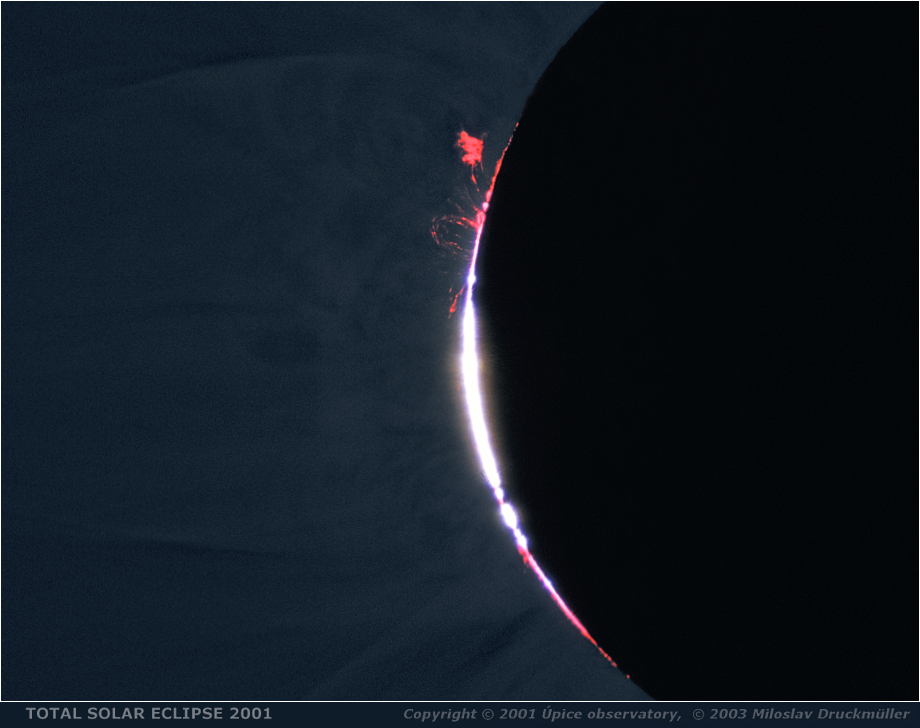| Image | Se2001u_02_comp09-17_bp1.png |
| Date | 21. 06. 2001 |
| Time | Second contact 12:36:34 UT, third contact 12:41:10 UT
Total eclipse duration 4 min 36 s |
| Place | Angola, near Sumbe (Ngunza) |
| Coordinate | S 11° 07' 29'', E 13° 55' 51'', Alt. 168 m |
| Conditions | Excellent, clear sky |
| Optics | Mertz - II, 1875/100 mm (VOD Turnov), siderostat off-axis configuration |
| Camera | PENTAX 67 II, 6 × 7.5 cm format |
| Resolution | 2.217 arc sec / pixel (image presented on this page) |
| Film | Kodak Ektachrome 100 S Professional |
| Processing | Composite of 9 images enhanced by means of adaptive kernel convolution
Image processing by Miloslav Druckmüller |
| Scanner | Nikon LS 8000 (4000dpi resolution, RGB, 3 × 16 bit/pixel) |
| Software | Sofo ACC 5.0 Scientific Image Analyzer with Match II Module (final processing)
Corona 2.0 Analyzer (coronal structure enhancement)
PhaseCorr 2.0 Analyzer (rotation estimation - registration of images) |
| Orientation | Image must be rotated -9.47° (clockwise) to achieve standard orientation (N top, E left) |
| Copyright | © 2001 Úpice Observatory, © 2003 Miloslav Druckmüller |

